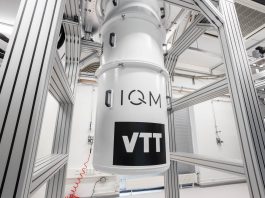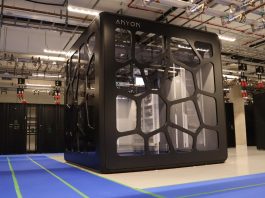UC Santa Barbara researchers are working to move cold atom quantum experiments and applications from the laboratory tabletop to chip-based systems.
Cold atoms open new possibilities for sensing, precision timekeeping, quantum computing and fundamental science measurements.
“We’re at the tipping point,” said electrical and computer engineering professor Daniel Blumenthal.
Blumenthal, along with graduate student researcher Andrei Isichenko and postdoctoral researcher Nitesh Chauhan, lays out the latest developments and future directions for trapping and cooling the atoms that are fundamental to these experiments — and that will bring them to devices that fit in the palm of our hands.
The quantum effects of cold atoms
Cold atoms are atoms that have been cooled to very low temperatures below 1 mK, reducing their motion to a very low energy regime where quantum effects emerge.
This makes them sensitive to some of the faintest electromagnetic signals and fundamental particles, as well as ideal timekeeping, navigation devices and quantum qubits for computing.
To capitalise on these properties, many researchers currently work with highly sensitive laboratory-scale atomic optical systems to confine, trap and cool the cold atoms.
Conventionally, these systems use free-space lasers and optics, generating beams that are guided, directed and manipulated by lenses, mirrors and modulators. These optical systems are combined with magnetic coils and atoms in a vacuum to create cold atoms using the ubiquitous 3-dimensional magneto-optical trap (3D-MOT).
The challenge that researchers face is how to replicate the laser and optics functions onto a small, durable device that could be deployed outside of the highly controlled environment of the lab for applications such as gravitational sensing, precision timekeeping and metrology, and quantum computing.
A major milestone for quantum computing
Enter the researchers’ photonic integrated 3D-MOT, a miniaturised version of equipment used widely in experiments to deliver beams of light to laser cool the atoms.
Embedded into a low-loss silicon nitride waveguide integration platform, it’s part of a photonic system that generates, routes, expands and manipulates all the beams necessary to trap and cool the atoms.
The review article highlights the photonic integrated 3D-MOT — or “PICMOT” demonstrated by the UC Santa Barbara team as a major milestone for the field.
“With photonics, we can make lasers on a chip, modulators on-chip, and now large-area grating emitters, which is what we use to get light on and off the chip,” Isichenko said.
Of particular interest is the atomic cell, a vacuum chamber where the atoms are trapped and cooled. One feat the researchers accomplished was to route the input light from an optical fibre, which is less than the width of a hair, via waveguides to three grating emitters that generate three collimated free-space intersecting beams 3.5 mm wide.
“We created cold atoms with integrated photonics for the first time,” said Blumenthal.
Advancing future research projects
The implications of the researchers’ cold atom innovations are far-reaching. With planned improvements to durability and functionality, future chip-scale MOT designs can take advantage of a menu of photonic components, including recent results with chip-scale lasers.
This can be used to optimise technology for applications as diverse as measuring volcanic activity to the effects of sea level rise and glacier movement by sensing the gradient of gravity on and around the Earth.
The integration of the 3D-MOT can give quantum scientists and timekeepers new ways to send today’s earthbound instruments into space, conduct new fundamental science, and enable measurements that are not possible on Earth.
Additionally, the devices could advance research projects by decreasing the time and effort spent establishing and fine-tuning optical setups. They can also open the door to accessible quantum research projects for future physicists.









